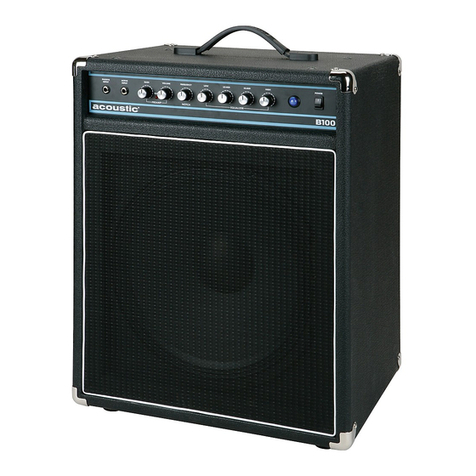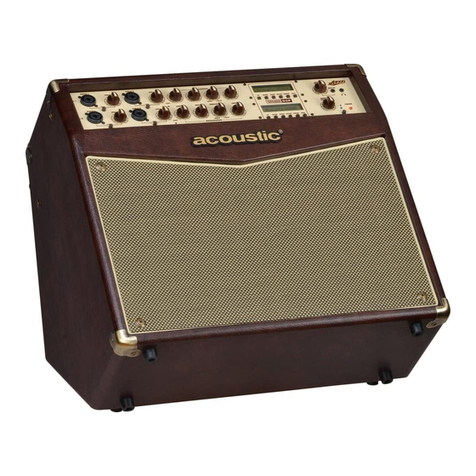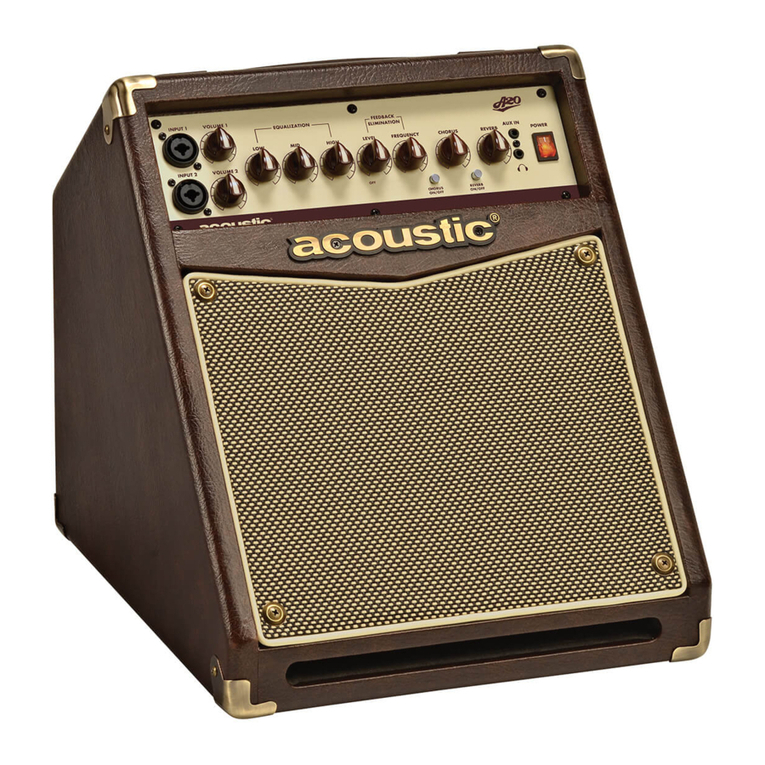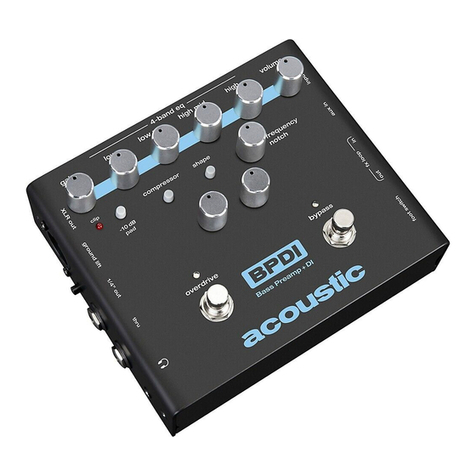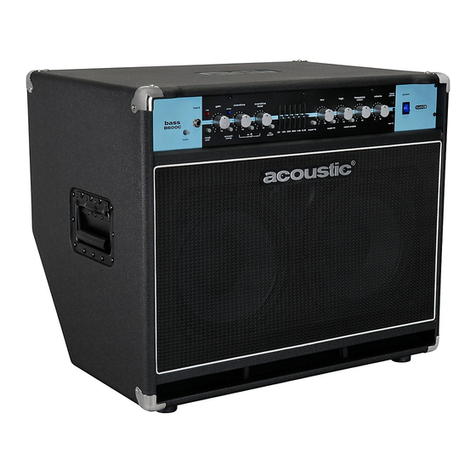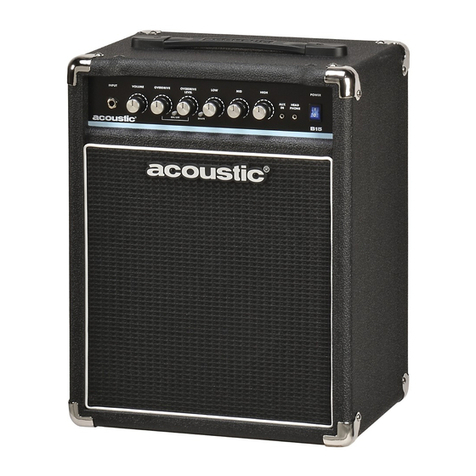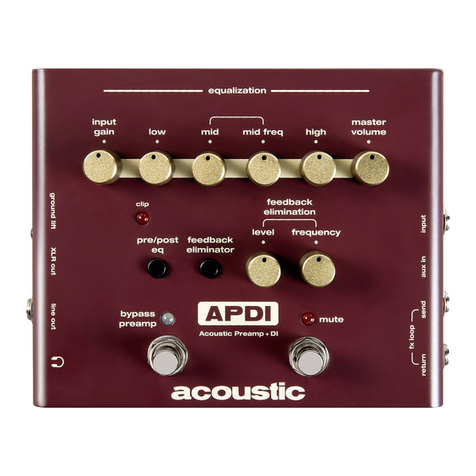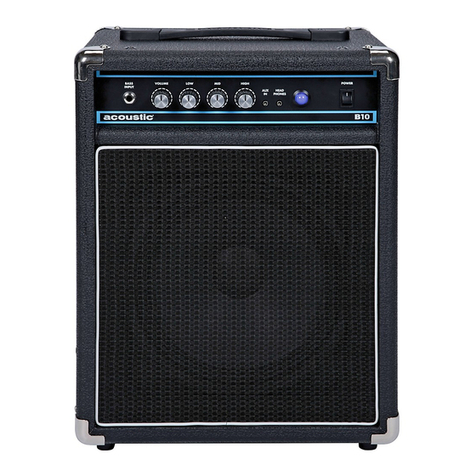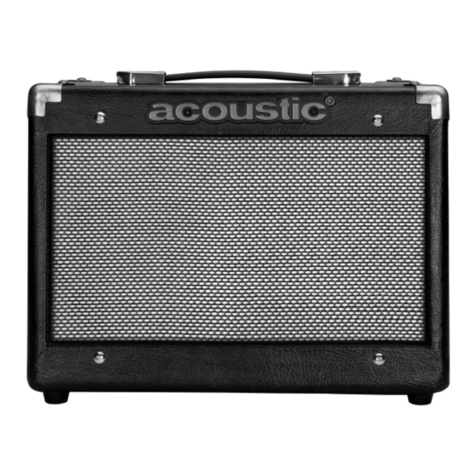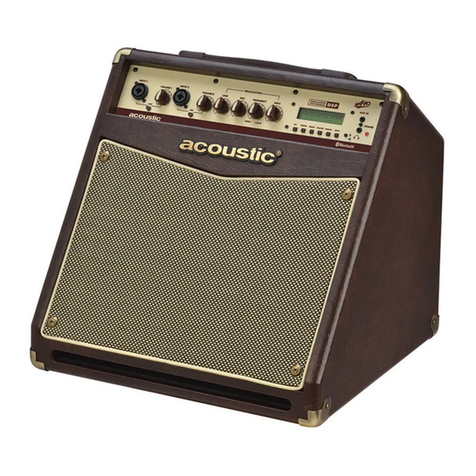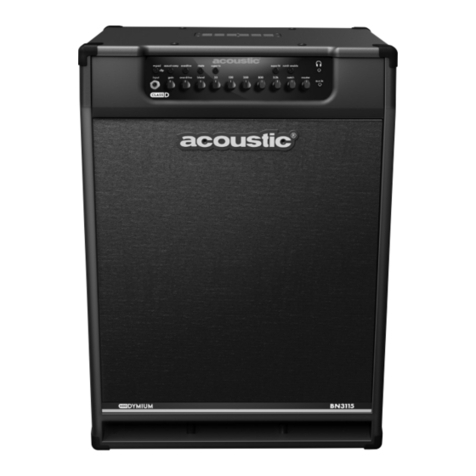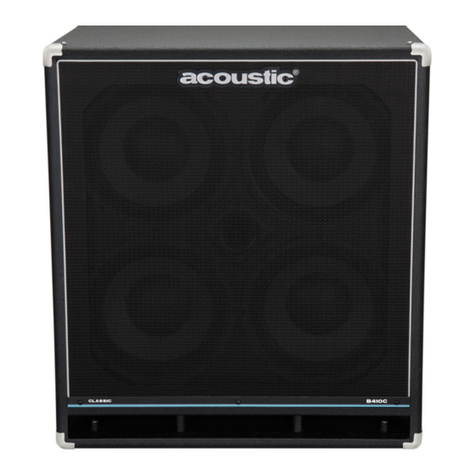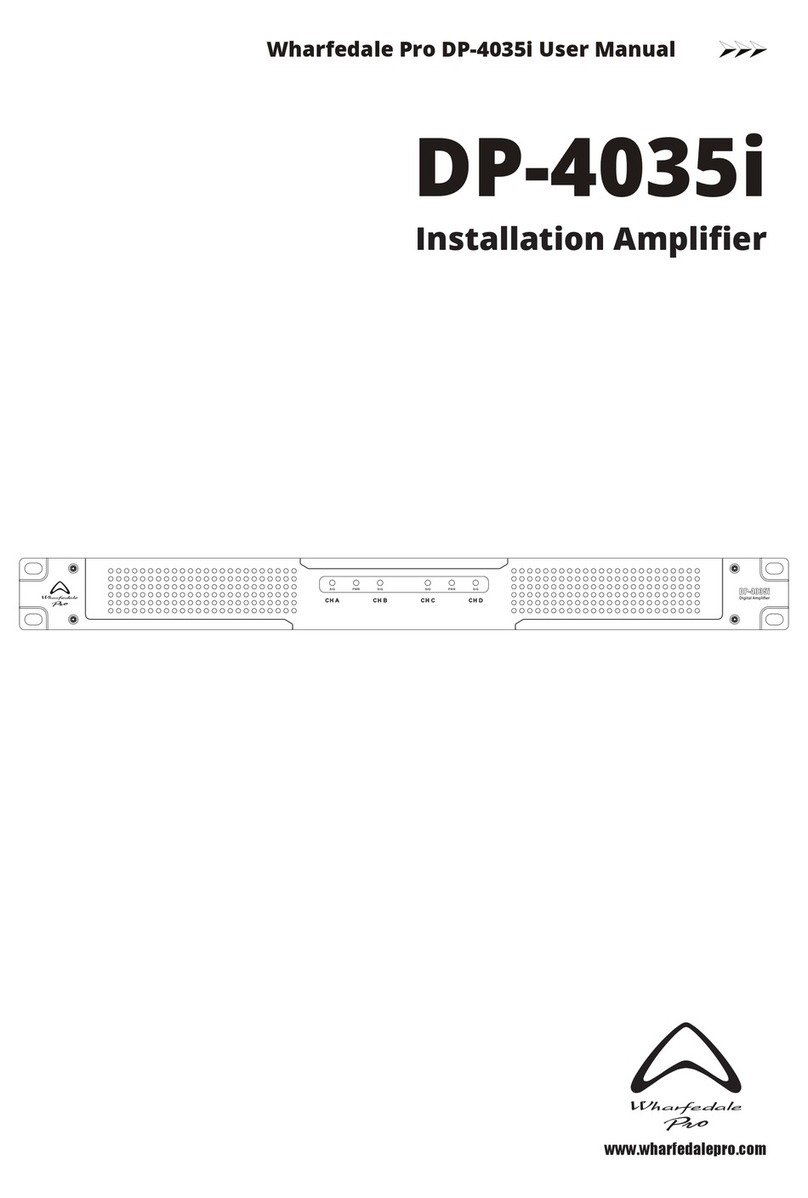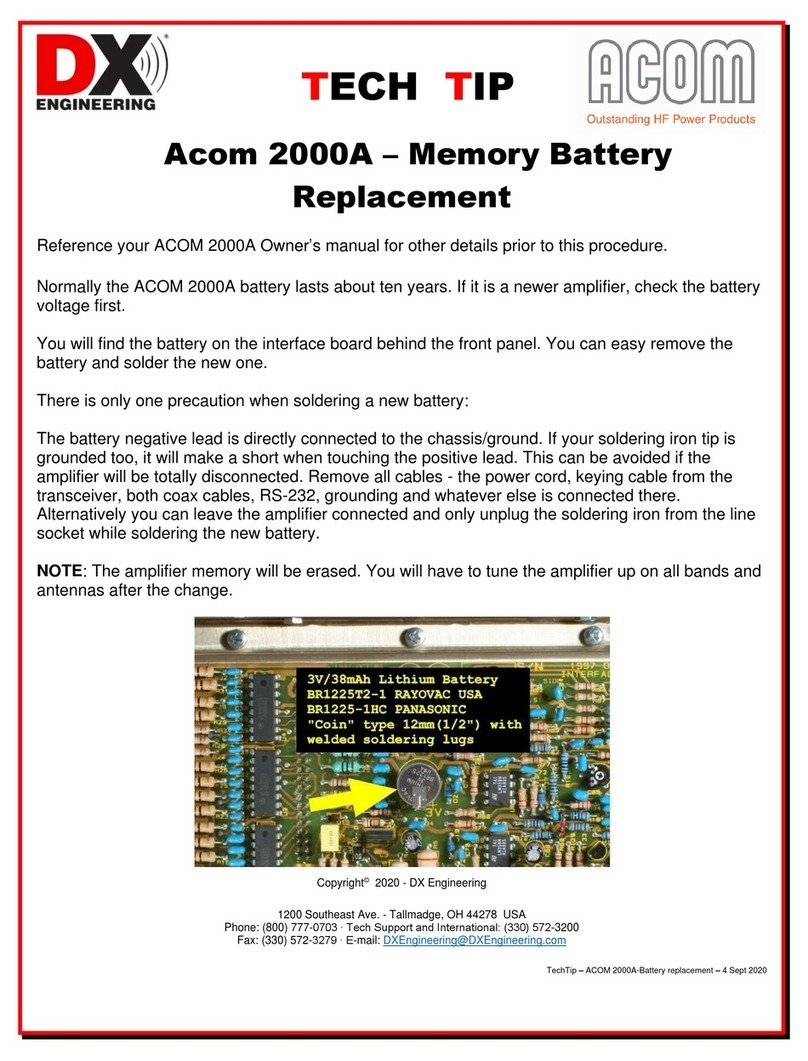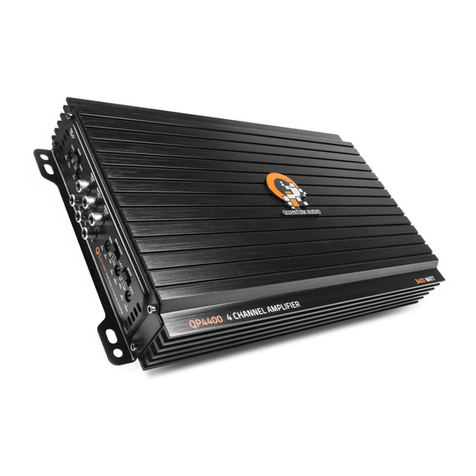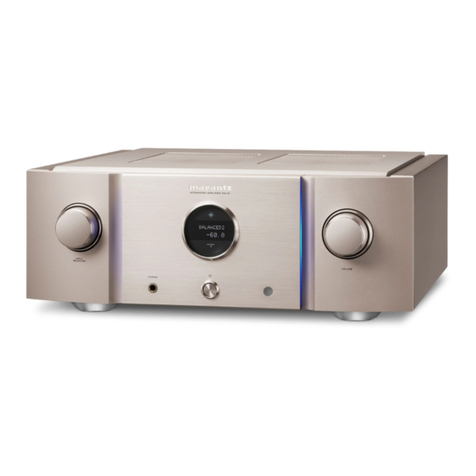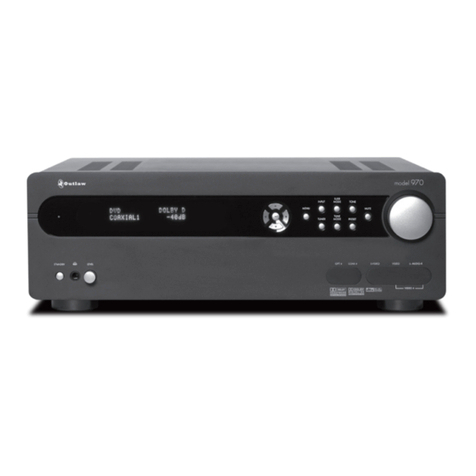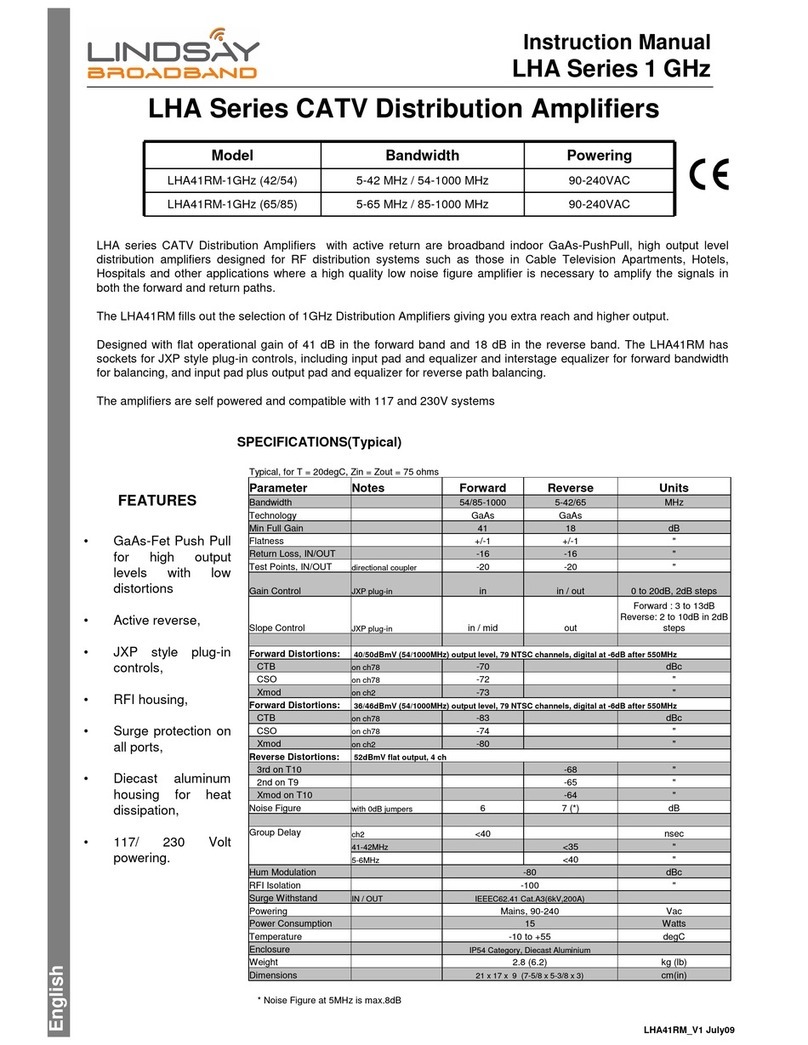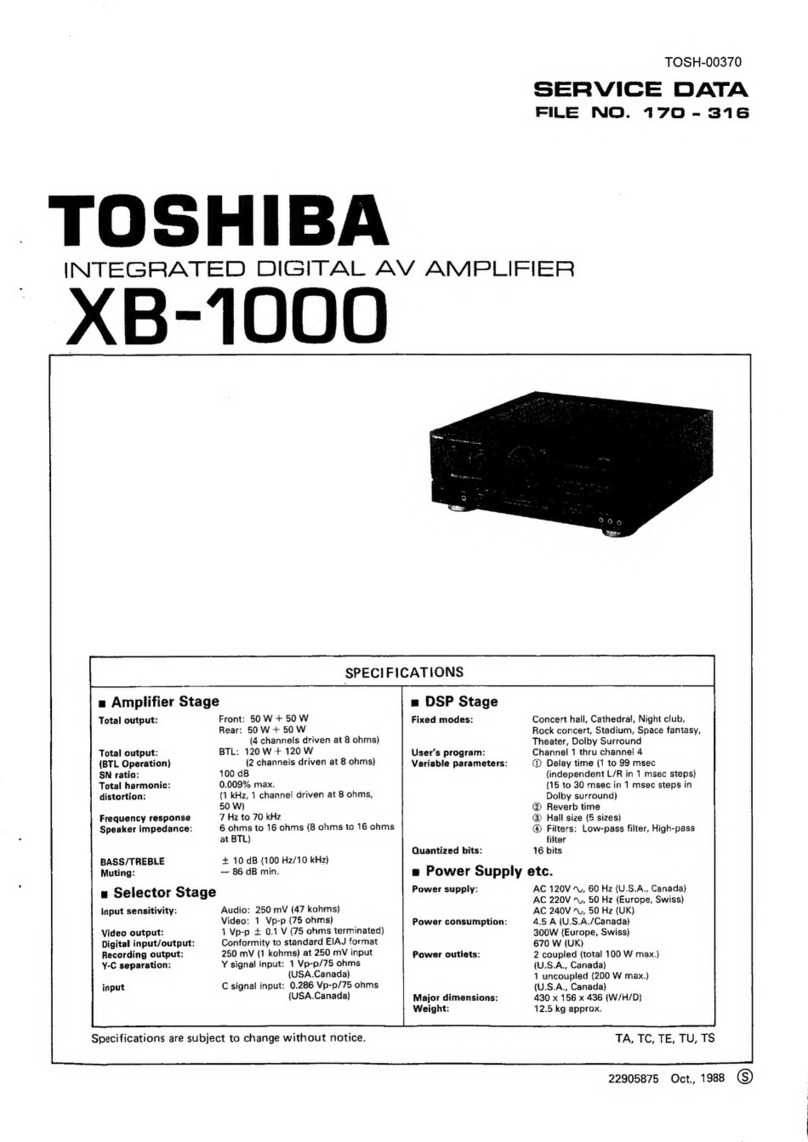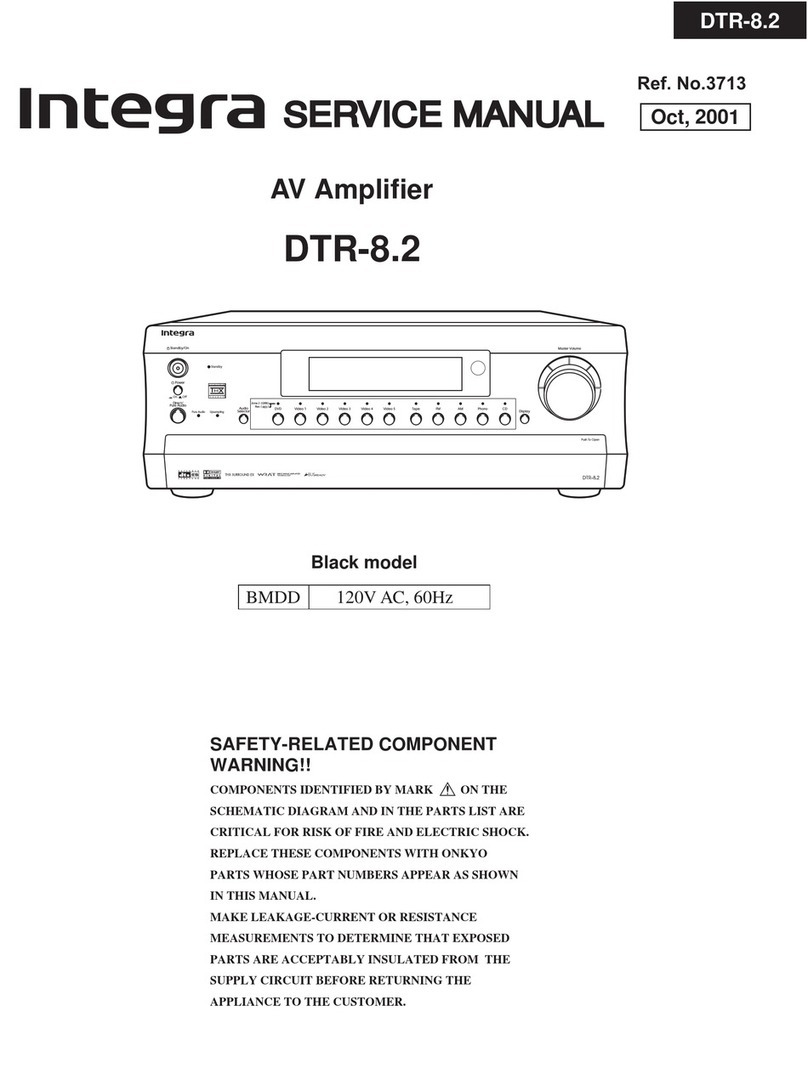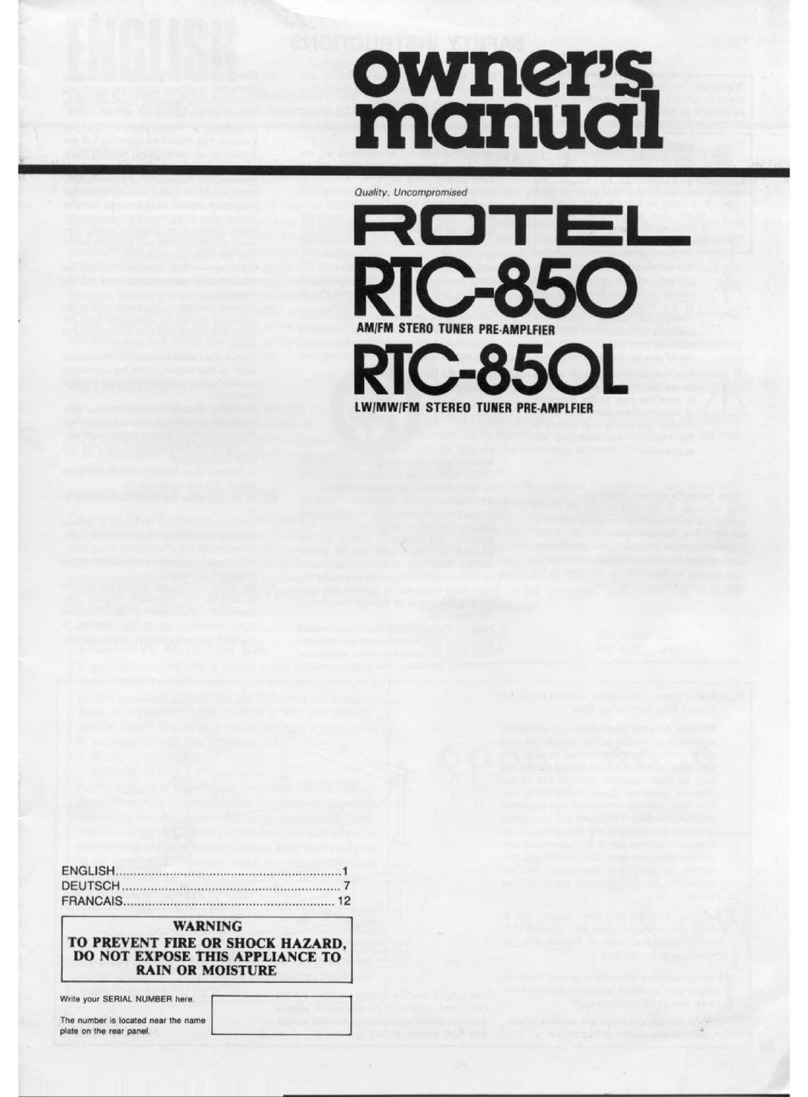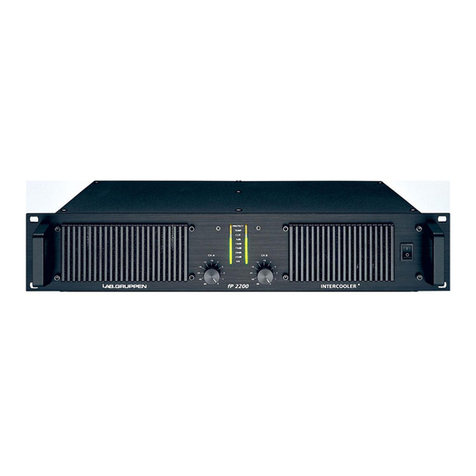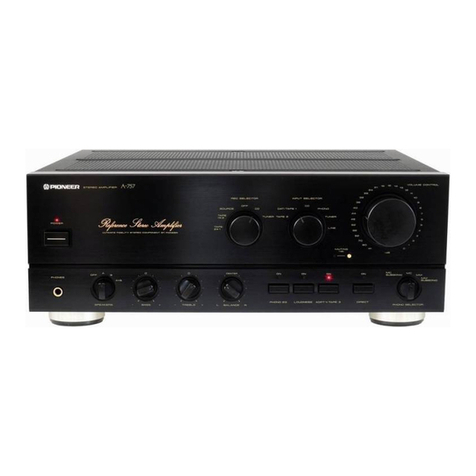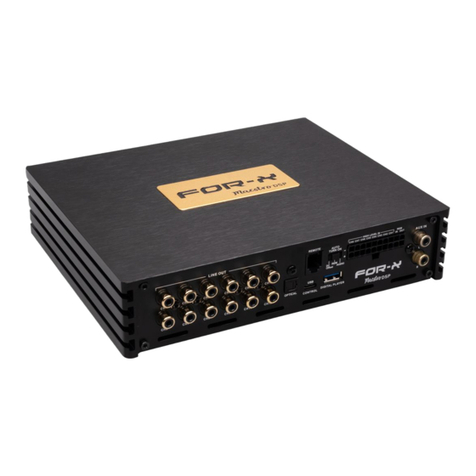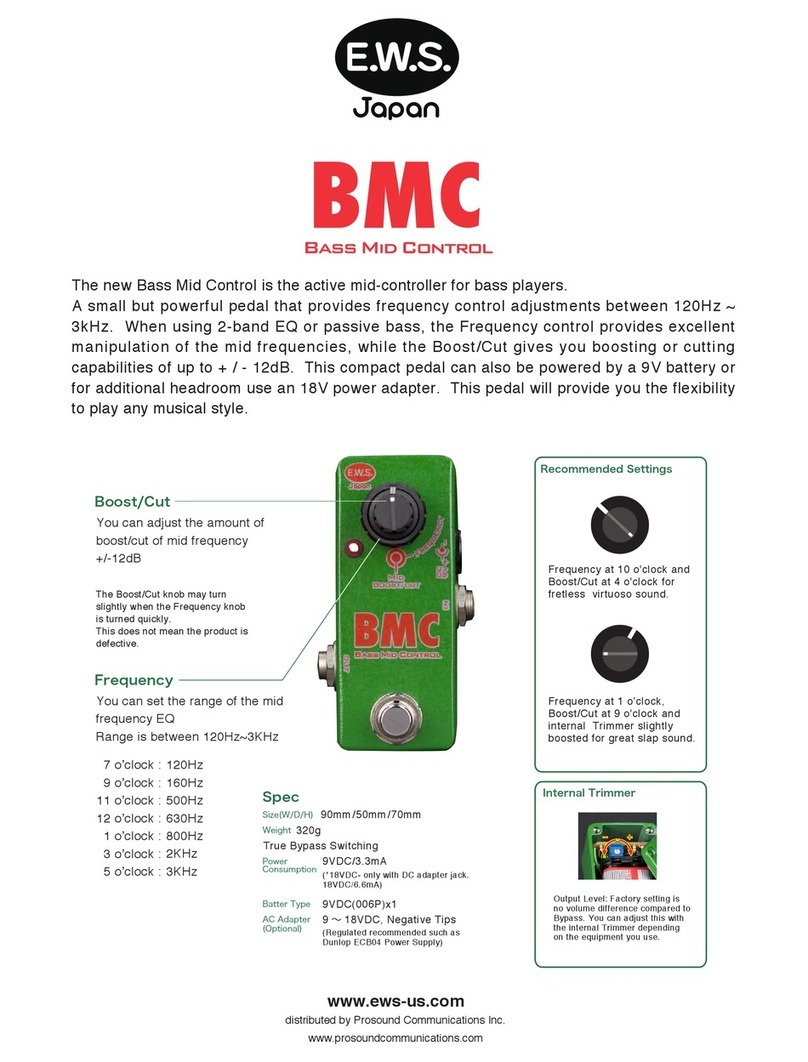f NPUTS (Hish and Low Gain) (U (21
The first input (1) is louder than the second input (2). The first input (1)should be used in
most cases to achieve maximum signal-to-noise ratio; however, if your instrument puts out such a
large signal that you can turn the volume control just a little bit above the off position, then use the
second input (2) to cut down on the signal. There is no difference in tone between the two inputs -
only volume. (No. 2 is 10 DB lower than No. 1.)
BRIGHT SWITCH (3)
In the BRIGHT position, the treble is boosted in relation to the bass and mid-range. lt is most
active at lower volume control settings and decreases in activity as the volume control (4) is
advanced to avoid feedback and oscillations at high volume.
VOLUME (4) (71
The Volume Control (4) increases the volume of all frequencies and special functions equally
with the exception of the Bright Switch (3). (See aborye.)
TREBLE (5) (B)
The treble circuitry is of the cut and boost type. This type of control allows you a great deal
of treble boost, as well as sufficient treble cut for maximum sustain in the mid-range at higher
power levels. Always keep in mind that straight up is flat. Turning the treble control to the left of
center eliminates treble, to the right of center increases treble.
BASS (6) (e)
The Bass Control is also of the cut and boost type. Flat (or normal) is straight up. To the left
of center cuts bass, to the right of center boosts.
GROUND REVERSE (10)
Under some conditions, the ground reverse switch can reduce or eliminate a persistant hum
or click in the strings. Set the switch in whichever position reduces or eliminates the oroblem.
POWER OFF/ON (11)
This turns the whole system on (see hook-up procedure). lf everything is working, there
might be a loud thump when you turn the amp on. DoN'T pANlc. This is normal.
P/N 410059
